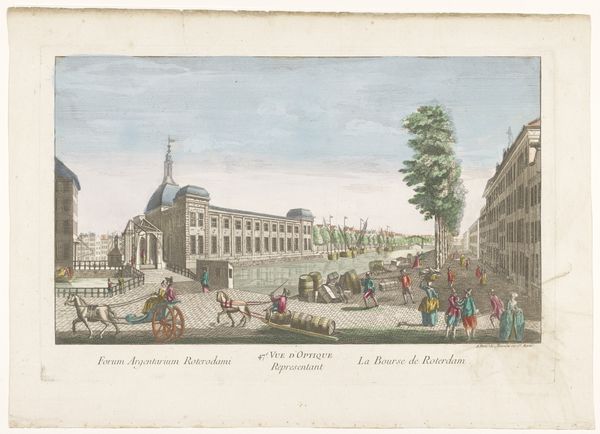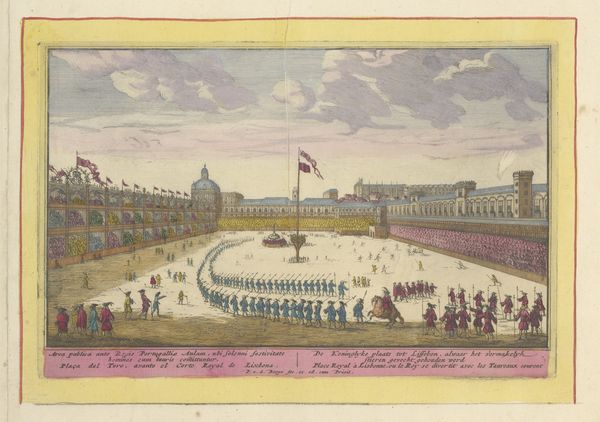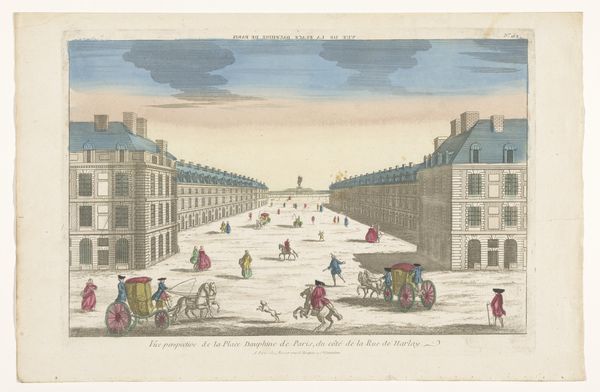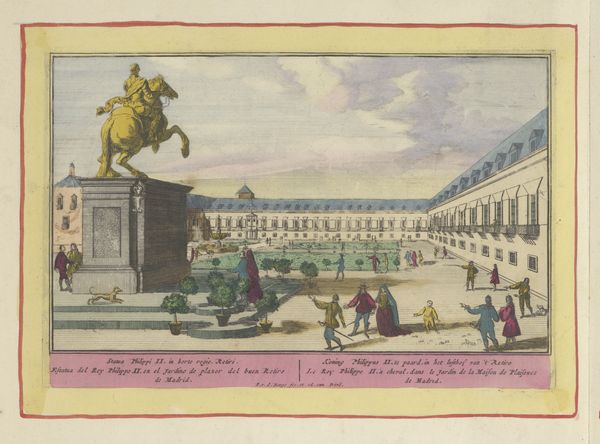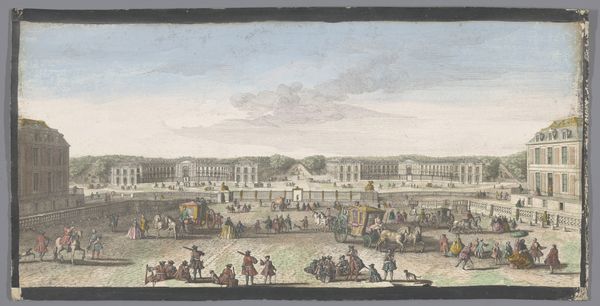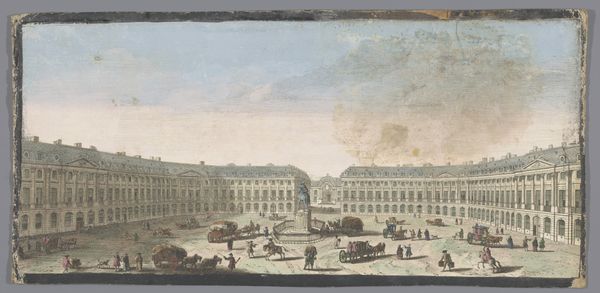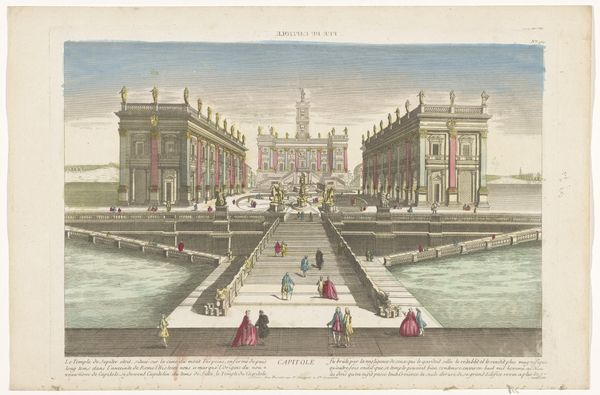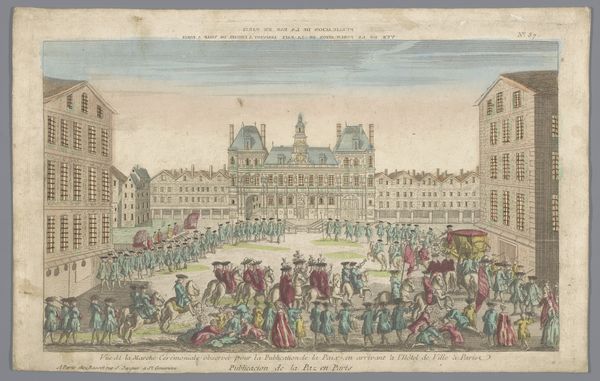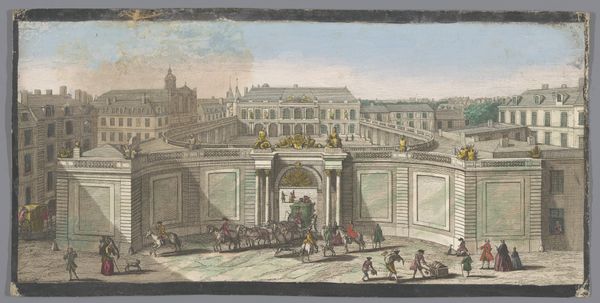
Gezicht op het Koninklijk Paleis te Lissabon en het voorplein met mensen 1694 - 1737
0:00
0:00
watercolor
#
water colours
#
baroque
#
landscape
#
watercolor
#
cityscape
#
watercolor
Dimensions: height 169 mm, width 260 mm
Copyright: Rijks Museum: Open Domain
Editor: This is "View of the Royal Palace in Lisbon and the Forecourt with People" by Pieter van den Berge, created sometime between 1694 and 1737, and rendered in watercolors. The panoramic view gives it a somewhat distant, observational feel. The sheer detail, despite the small scale, is quite captivating. What strikes you about the visual arrangement and structural components of the piece? Curator: Immediately, I observe the rigid orthogonal structure juxtaposed with the organic billowing of the clouds and water. The artist has meticulously delineated space, creating layers that draw the eye deep into the composition. Note how the palace’s facade functions almost as a grid, a series of repeated geometric forms providing a counterpoint to the naturalistic portrayal of human activity in the foreground. Do you notice how the architectural solidity contrasts with the transience suggested by the ships on the water? Editor: Yes, the visual contrast is very apparent, creating a subtle tension. Curator: Precisely. Furthermore, let us examine the colour palette. Van den Berge employs a restricted range of pale blues, yellows, and pinks, thus enhancing the image's flatness and decorative character. It calls attention to its constructed nature rather than aiming for an illusion of depth. In other words, each design element draws one’s focus back to its design purpose. Editor: That's a perspective I hadn’t considered before. I was mainly drawn in by the story-telling aspect, all of the people and activity within the scene. Curator: Indeed, the narrative component exists. However, considering the painting's emphasis on constructed symmetries and contrasting formal qualities offers a different level of appreciation. What new compositional details are now coming into view? Editor: Well, now I’m paying much closer attention to the way the sky, water, and architecture work to form a kind of stage, framing the activities of the people below. I didn’t quite notice how purposeful that was before. Thanks for shedding new light on how to decode a visual source through its different qualities. Curator: My pleasure. Observing, absorbing, then thinking of what those two aspects tell us helps to appreciate art's more complicated messages.
Comments
No comments
Be the first to comment and join the conversation on the ultimate creative platform.
